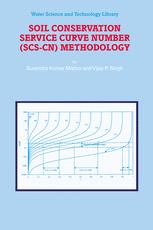

Most ebook files are in PDF format, so you can easily read them using various software such as Foxit Reader or directly on the Google Chrome browser.
Some ebook files are released by publishers in other formats such as .awz, .mobi, .epub, .fb2, etc. You may need to install specific software to read these formats on mobile/PC, such as Calibre.
Please read the tutorial at this link: https://ebookbell.com/faq
We offer FREE conversion to the popular formats you request; however, this may take some time. Therefore, right after payment, please email us, and we will try to provide the service as quickly as possible.
For some exceptional file formats or broken links (if any), please refrain from opening any disputes. Instead, email us first, and we will try to assist within a maximum of 6 hours.
EbookBell Team

5.0
18 reviewsThe Soil Conservation Service (SCS) curve number (CN) method is one of the most popular methods for computing the runoff volume from a rainstorm. It is popular because it is simple, easy to understand and apply, and stable, and accounts for most of the runoff producing watershed characteristics, such as soil type, land use, hydrologic condition, and antecedent moisture condition. The SCS-CN method was originally developed for its use on small agricultural watersheds and has since been extended and applied to rural, forest and urban watersheds. Since the inception of the method, it has been applied to a wide range of environments. In recent years, the method has received much attention in the hydrologic literature. The SCS-CN method was first published in 1956 in Section-4 of the National Engineering Handbook of Soil Conservation Service (now called the Natural Resources Conservation Service), U. S. Department of Agriculture. The publication has since been revised several times. However, the contents of the methodology have been nonetheless more or less the same. Being an agency methodology, the method has not passed through the process of a peer review and is, in general, accepted in the form it exists. Despite several limitations of the method and even questionable credibility at times, it has been in continuous use for the simple reason that it works fairly well at the field level.